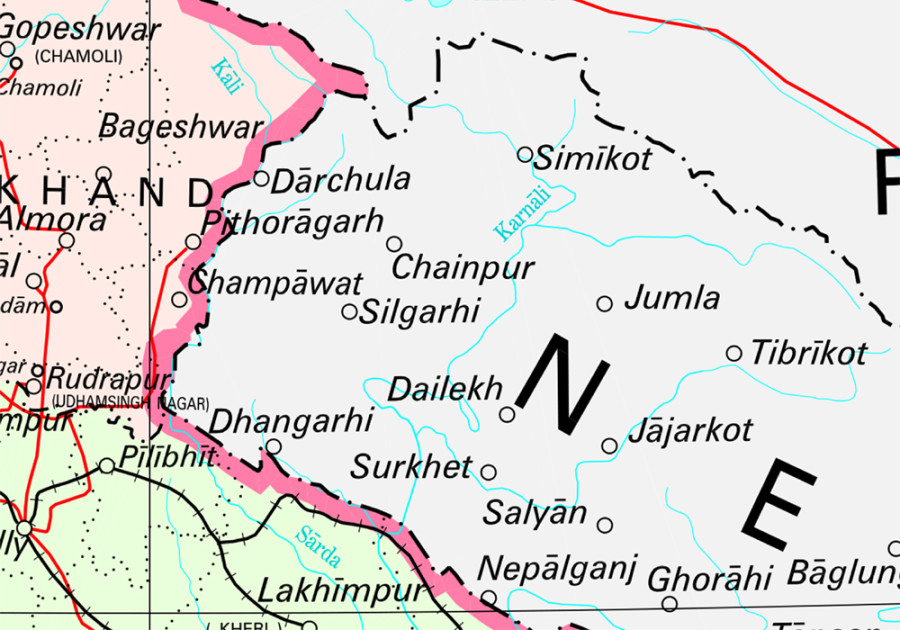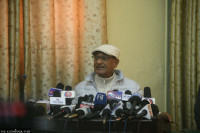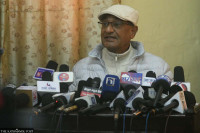National
Delhi-based experts on Nepal call for dialogue to settle border row
A new Indian map placing Kalapani inside Indian borders has stirred controversy and sparked protests in Nepal.
Suresh Raj Neupane
Amid an uproar in Nepal over a new Indian political map that places Kalapani within Indian borders, New Delhi-based experts on Nepal affairs said on Tuesday that the issue must be resolved through dialogue and not from the streets.
“Both sides should openly present their interests and stance,” said KV Rajan, a former Indian ambassador to Nepal. “Nepal has every right to present its claims regarding the matter. Nepal has full authority to have a say and lay their claims.”
Read: Nepal hopes to resolve Kalapani dispute through a meeting of the foreign secretaries
The Post reported last week that India’s new map—released after India formally split up the disputed Jammu and Kashmir state into two federal territories, in line with an August move by the Narendra Modi government to rescind Kashmir’s autonomy—placed Kalapani inside Indian borders.
Since then, both Nepal and India have issued statements, making their positions clear. Nepal has also requested India for a foreign secretary-level meeting to resolve the issue.
Meanwhile, there have been protests in Kathmandu over the new Indian map.
Rajan, who served as the ambassador to Nepal during the signing of the Mahakali treaty between Nepal and India, said such matters could not be resolved through public pressure.
Read: India’s new political map places disputed territory of Kalapani inside its own borders
“Street protests can further complicate matters and fuel mistrust between the two countries,” Rajan told the Post.
While responding to a question regarding India placing Kalapani within its borders, Raveesh Kumar, spokesperson for Indian Ministry of External Affairs, had said, “both countries should guard against vested interests trying to create differences between our two countries.”
SD Muni, also an expert on Nepal affairs, said that the political map published by India is not new in terms of the border with Nepal and that if there are any disputes, they should be resolved together through discussion.
“Such disputes are often seen when rivers are marked as borders. The only way to resolve such dispute is dialogue,” said Muni.
Hinting at some protesters in Nepal burning Indian Prime Minister Narendra Modi’s effigy, Muni said such protests and activities could worsen the relations rather than help solve the problem.
Read: Government finally comments on new Indian map but takes no firm position
Relations between Nepal and India had soured in 2015 after the promulgation of the constitution, as New Delhi imposed a border blockade creating an acute crisis of daily essentials, including medicines and fuel, in Nepal.
Enhanced bilateral engagements in recent years, however, have helped improved ties between the two countries and some irritants that keep emerging once in a while between neighbours should not affect the relations, experts said.
“At a time when our relations have moved forward in a positive direction, we need to find a lasting solution to issues like Kalapani,” said Rajan. “Nepal and India share historical and close ties. Both sides should try to understand each other’s sentiments. Traditional diplomacy cannot find a solution to this particular problem; both sides should explore new ways to address such issues.”
Professor Mahendra P Lama, a member of the Nepal-India Eminent Persons Group from the Indian side, also called for finding a solution through dialogue.
The Eminent Persons Group, which was formed to provide suggestions for resetting ties and revising bilateral treaties as well as making recommendations on border-related issues, had prepared its report more than a year and a half ago. However, it is yet to be submitted to the prime ministers of both countries, largely due to a busy schedule of Modi. The last meeting of Eminent Persons Group had agreed to formally publish the report after submitting it to the prime ministers of Nepal and India.
Referring to Nepal’s request for a foreign secretary-level meeting to discuss the boundary row, Lama, who is also a Post columnist, said the initiative taken by Nepal is positive.
“Though it’s a decades-old problem, there is no alternative to dialogue,” said Lama. “And the initiative taken by Nepal is in the right direction.”




 6.12°C Kathmandu
6.12°C Kathmandu













%20(1).jpg&w=300&height=200)

